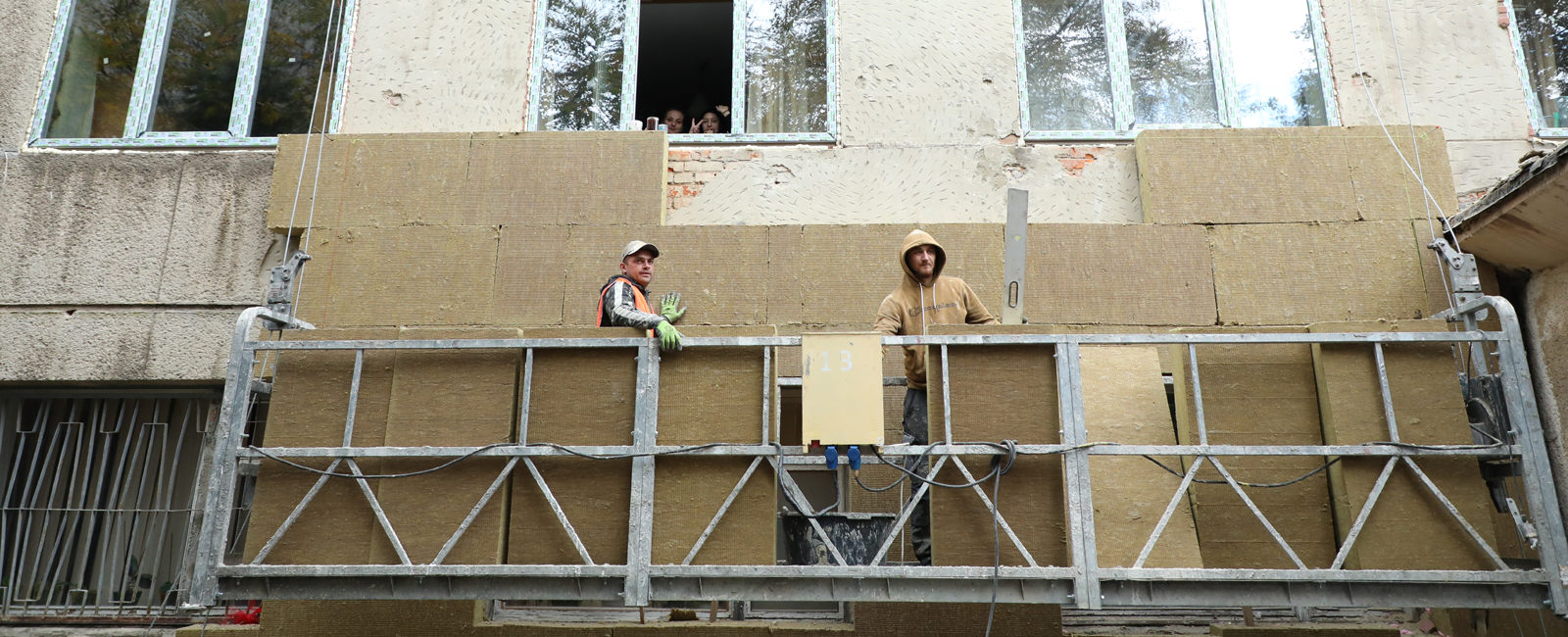The Higher Education, Energy Efficiency and Sustainable Development project has a long history. Back in 2012, as a result of a competitive selection process, the University was recognised as a leader and got included in the first phase of the project funded by the European Investment Bank (EIB). In total, according to the agreement signed by Rector Yuriy Bobalo, the Ministry of Education and Science and the EIB, the University’s facilities would get funding of €10.8 million.
First of all, four facilities were included in the project: dormitory No. 3, academic building No. 1, academic building No. 2, and academic building No. 5. One may wonder why these particular facilities (academic buildings and dormitories) were included in this project.
As for dormitory No. 3, it is in the worst technical condition. In addition to energy efficient measures, the entire package of internal works needs to be carried out there, which will be implemented next year. We are currently developing the design and construction documents for the internal works. According to the Higher Education project, the work began on 10 October in accordance with the agreement and schedule.
As for the academic buildings, back in 2016, we offered 13 (thirteen) academic buildings for an energy audit carried out by highly qualified specialists sent by the European Investment Bank.
The audit was based on
- assessment of fuel and energy consumption (electricity, heat);
- assessment of the current technical condition of the building (external envelope structures (walls, windows, roofs), heating and ventilation, lighting);
- energy efficiency, payback period.
As a result of the inspections and relevant analysis, the auditors proposed and the university agreed to implement energy efficiency measures in academic buildings No. 1, 2, 4, 5, which are the most energy-intensive, with the mandatory implementation of the following package of measures for thermal modernization of buildings, namely:
- replacement of the entrance doors (with insulated metal or plastic doors with double-glazed windows);
- replacement of windows (the existing windows do not meet any energy efficiency requirements (they were installed in the early 2000s) with windows made of multi-chamber metal profile with double-glazed windows;
- thermal insulation of the walls of the basement foundation, which is heated;
- thermal insulation of the technical attic;
- thermal insulation of flat roofs;
- thermal insulation of external walls;
- installation of a new heating station with heat metering for residential buildings;
- installation of a new mechanical ventilation system;
- renovation of the hot water supply system.
In the course of the long preparatory work (bank requirements, COVID-19, martial law), the cost of the above works and salaries have increased significantly since 2016. As a result, it was not possible to include all the proposed buildings (No. 1, 2, 4, 5) and it was decided to choose buildings No. 1, 2, 5 and dormitory No. 3.
As of 16.10.2024, the Project Implementation Agreement was signed with the winner of the tender for academic building No. 5. The process of signing an agreement with the winner of the tender for technical supervision is ongoing. After obtaining a permit to start construction work (from the State Inspectorate of Architecture and Urban Development of Ukraine), the work will begin at the end of October or beginning of November. Subsequently, tenders will be announced for academic buildings 1 and 2.
As for academic buildings 1, 2 and 5, a logical question will arise: what to do with the existing windows, which are not energy-efficient but are in good condition and will be replaced.
- The first option is to save them during dismantling.
- The second is to use them as much as possible at technical facilities.
- The third option is to sell it legally to legal entities and individuals.
This year the University replaced the windows in the academic building No. 15 at its own expense, implementing the energy efficient program. An agreement has been signed to partially replace windows in academic building No. 7 (the rest will be restored) and to replace door fillings in the courtyards of the main building. We are waiting for the design and construction documents for the windows replacement in building No. 14, which we also plan to replace this year. All these are also energy efficient measures that help to save on energy costs and add comfort to the participants of the educational process (employees and students).
We will continue to inform the general public about the progress of the project, the problems that will arise, and their solutions, as the agreements are very sensitive and not everything could be taken into account by the designers when preparing the documents. This is the first time we have dealt with such a large amount of work, its duration, safety during implementation, etc.
Head of the project implementation team,
Vice-Rector Volodymyr KRAIOVSKYI
